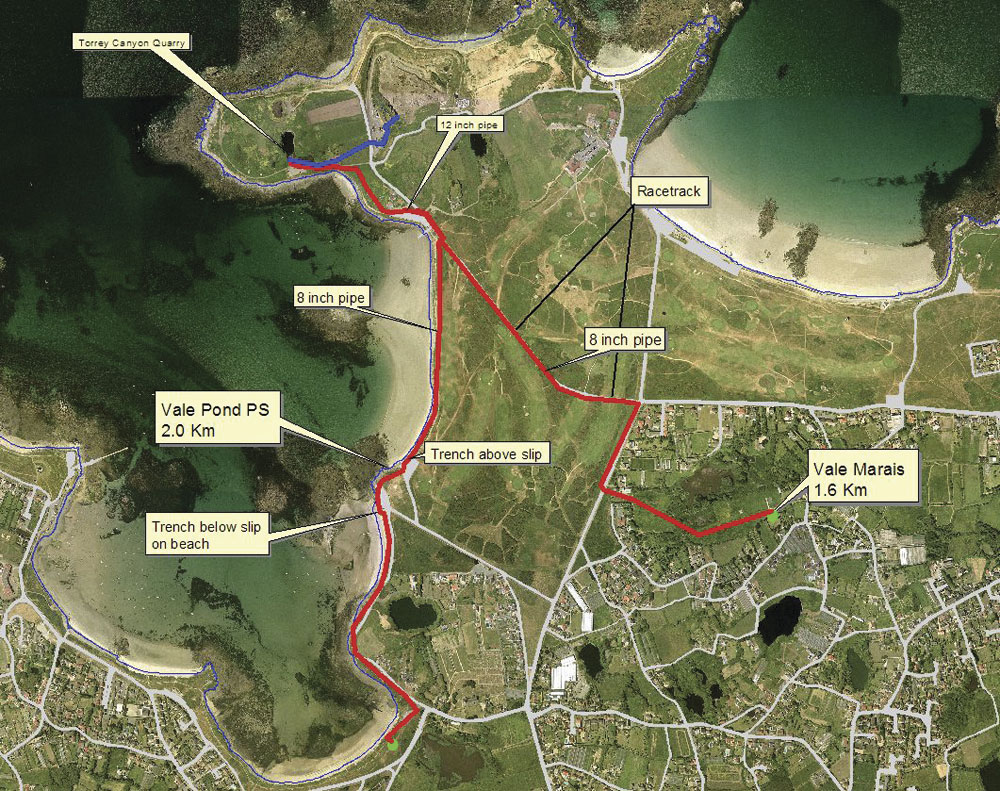Fire in the Hole!

When Mont Cuet landfill site on Guernsey caught fire, multiple attempts were made to extinguish the subterranean inferno before an innovative solution involving pumps and equipment from Flygt Rental finally extinguished the blaze
When a subterranean fire was discovered smouldering deep within the Mont Cuet landfill site on Guernsey in April 2005, the States of Guernsey – the island’s government – reviewed numerous proposals to extinguish the blaze, including the use of seawater pumped into the site. However, there were concerns that the naturally occurring sulphates in seawater would dramatically increase anaerobic activity within the site, which in turn would generate unacceptably high levels of hydrogen sulphide, making the situation worse.
Although there was no immediate danger, leaving the fire burning at the island’s only refuse site was not an option, as there was the possibility that the fire could create large underground voids and destroy the landfill gas extraction ducts. It was clear, therefore, that a freshwater solution was going to be the only way to douse the fire, but that posed huge logistical problems, both in terms of moving equipment into the right place and moving huge volumes of water to Mont Cuet.
A scheme was devised by Nick Nicolle, senior technical manager of the States of Guernsey’s Works Division, and ITT Water & Wastewater’s distributor on the island. The plan was to use the nearby and now disused Torrey Canyon Quarry as a reservoir, however at the time there was insufficient water in the quarry, which has no water source of its own, so an alternative source of water was required. The project team estimated that they would need approximately 30 litres of water per second to feed the landfill site, so a proposal was put forward to use clean water from a pond and a watercourse, both of which were 2.5km away at Vale Pond and Vale Marais.
‘The plan was to utilize Vale Pond as the primary source,’ explained Flygt Rental manager Mark Warren, ‘and my role was to specify the pumps, controls and pipe sizes, and supply the equipment to make the plan work.’
At Vale Pond two Flygt NS3202HT pumps were used to deliver a maximum flow of 55 litres/s at 46.5m total generated head with the water pumped to Torrey Canyon Quarry via 2,000m of pipe. At Vale Marais a single NS3153HT pump was used to deliver a maximum flow of 11 litres/s at 20m total generated head via 1,500m of pipe. Both of these pump discharges were then combined into a single main pipeline for the final 500m.
‘When moving such large volumes of water with such long pipe runs there is a huge amount of momentum contained within the fluid, with the biggest problem occurring when the pumps stop,’ said Mr Warren. ‘For this reason, all three of the pumps were controlled using variable-speed drives, which allowed us to slowly reduce the speed of the pumps to a standstill.’
From Torrey Canyon Quarry the water was pumped across fields to the Mont Cuet landfill site, where it was pumped around the hot spot and injected underground at various points. Here at the holding quarry, Flygt Rental provided two further Flygt BS2151LT pumps fitted on to Flygt flotation modules. Each of these pumps was capable of delivering 30 litres/s at 24m total generated head into the landfill site.
Once there was sufficient water in the landfill site, two Flygt BS2201HT EX pumps were used in a duty and standby mode to pump the contaminated water out to an adjacent holding lagoon prior to treatment using the site’s existing plant. The duty pump was capable of draining 14 litres/s at 87m total generated head, matching the treatment capacity of the existing facility.
In total, water was pumped into Mont Cuet landfill for approximately four weeks before fire was totally extinguished.
‘This was a very demanding set of circumstances to work under,’ concluded Mr Warren. ‘The distance of the water sources from the landfill made the movement of water extremely difficult, while the conditions in the landfill itself meant that explosion-proof pumps were necessary. The fact that we achieved a successful outcome was down to a well-planned team effort by all concerned.’


